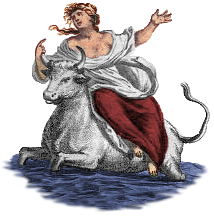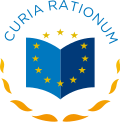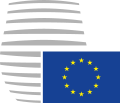Portal:European Union
Introduction
The European Union (EU) is a supranational political and economic union of 27 member states that are located primarily in Europe. The union has a total area of 4,233,255 km2 (1,634,469 sq mi) and an estimated population of over 449 million as of 2024. The EU is often described as a sui generis political entity combining characteristics of both a federation and a confederation. Containing 5.5% of the world population in 2023, EU member states generated a nominal gross domestic product (GDP) of around €17.935 trillion in 2024, accounting for approximately one sixth of global economic output. Its cornerstone, the Customs Union, paved the way to establishing an internal single market based on standardised legal framework and legislation that applies in all member states in those matters, and only those matters, where the states have agreed to act as one. EU policies aim to ensure the free movement of people, goods, services and capital within the internal market; enact legislation in justice and home affairs; and maintain common policies on trade, agriculture, fisheries and regional development. Passport controls have been abolished for travel within the Schengen Area. The eurozone is a group composed of the 20 EU member states that have fully implemented the EU's economic and monetary union and use the euro currency. Through the Common Foreign and Security Policy, the union has developed a role in external relations and defence. It maintains permanent diplomatic missions throughout the world and represents itself at the United Nations, the World Trade Organization, the G7 and the G20. Due to its global influence, the European Union has been described by some scholars as an emerging superpower. In 2012, the EU was awarded the Nobel Peace Prize. In 2020, the United Kingdom became the only member state to leave the EU; ten countries are aspiring or negotiating to join it. (Full article...) Selected articleThe Treaties of Rome are two of the treaties of the European Union signed on March 25, 1957. Both treaties were signed by The Six: Belgium, France, Italy, Luxembourg, the Netherlands and West Germany. The first established the European Economic Community (EEC) and the second established the European Atomic Energy Community (EAEC or Euratom). They were the first international organisations to be based on supranationalism, after the European Coal and Steel Community (ECSC) established a few years prior. The treaties came into force on 1 January 1958 and the EEC treaty has been amended on numerous occasions (see Treaties of the European Union); It has since been renamed from The Treaty establishing the European Economic Community to the The Treaty establishing the European Community. However the Euratom treaty has seen very little amendment due to the later sensitivity surrounding atomic energy amongst the European electorate. Selected picturePhoto credit: Benh Lieu Song The Arc de Triomphe at night. Commissioned by Napoleon after the victory in the Battle of Austerlitz, it stands in the middle of the Place Charles de Gaulle, at the western end of the Champs-Élysées. At 51 metres (167 ft) high and 45 m (148 ft) wide, it is the second-largest triumphal arch in the world. The monument honors soldiers throughout French history, and houses the tomb of the unknown soldier.
Did you know?... that the presidency of the EU Council rotates every half year? ... that the EU parliamentary election is the world's biggest transnational election? ... that the European Union was awarded the Nobel Peace Prize in 2012? Selected cityRiga, the capital of Latvia, is situated on the Baltic Sea coast on the mouth of the River Daugava, at 56°58′N 24°8′E / 56.967°N 24.133°E. Riga is the largest city in the Baltic states. The Historic Centre of Riga has been declared a UNESCO World Heritage Site, and the city is particularly notable for its extensive Art Nouveau (Jugendstil) architecture, comparable in significance only with Vienna, Saint Petersburg and Barcelona. The modern founding of Riga is regarded by historians to have begun with the arrival in Latvia of German traders, mercenaries and religious crusaders in the second half of the 12th century, attracted by a sparsely populated region, potential new markets and by the missionary opportunities to convert the local population to Christianity. German merchants established an outpost for trading with the Balts near the Liv settlement at Riga in 1158. The Augustinian monk Meinhard built a monastery there circa 1190. General imagesThe following are images from various European Union-related articles on Wikipedia.
TopicsFeatured contentFeatured articles
Featured lists
Featured contentGood articles
CategoriesRelated portalsAssociated WikimediaThe following Wikimedia Foundation sister projects provide more on this subject:
Discover Wikipedia using portals |



































































